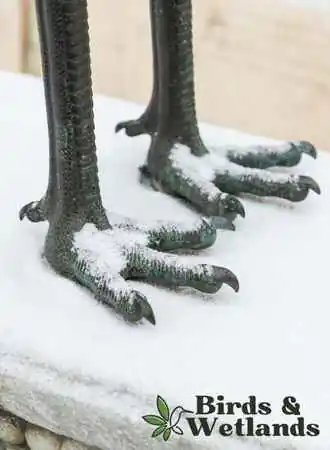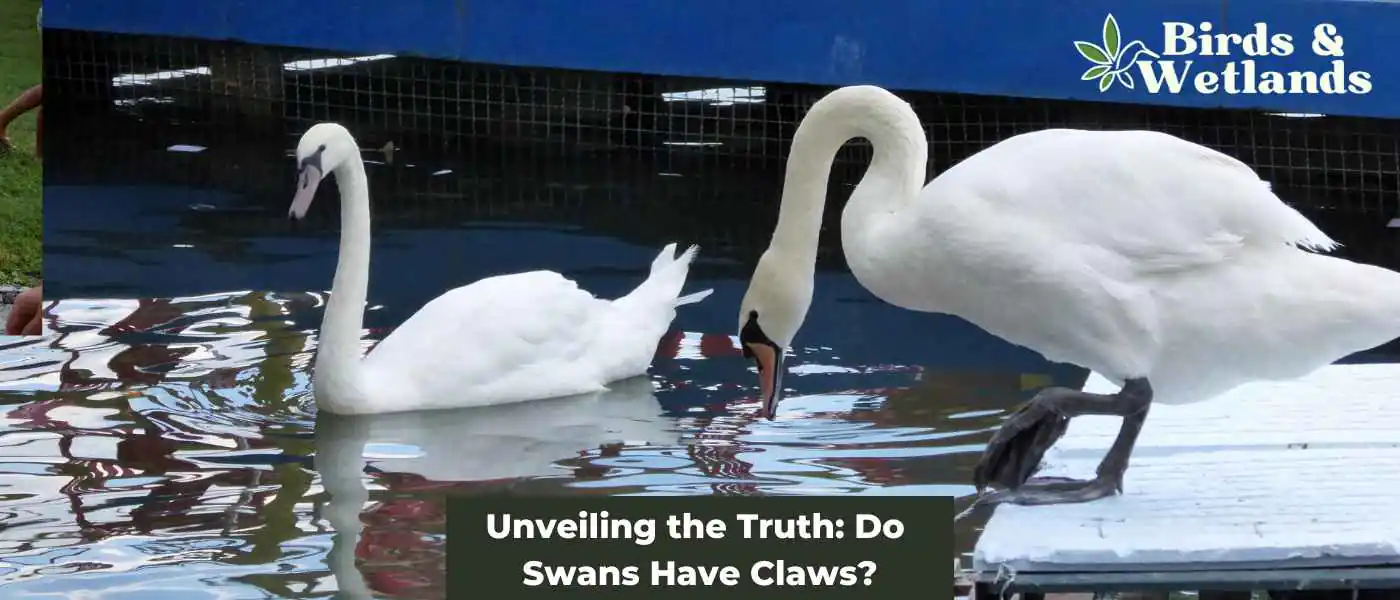The answer is no, swans do not have claws. But, do you know why? And how do they survive in the wild without them?
Keep reading to find out more about the unique adaptations that allow swans to thrive in their habitats, and to explore the cultural significance of these birds.
Key Takeaways on Swans and Claws
- Swans are pretty impressive birds with their long necks, large bodies, and elegant appearance.
- Adult swans are protective of their mate, nest and young.
- Birds with claws are predators or birds of prey.
What are the physical characteristics of swans?
Swans which include the mute swan (Cygnus olor) and the black swan, are the largest waterfowl. They are members of the Anatidae family which also includes several species of geese and ducks.
These birds are hard to miss with their long necks and large bodies. They’re often pure white (mute swans), but some species can also have black or dark feathers.
Their long necks can be up to twice the length of their body and they use them to gracefully glide through the water like they’re on a runway.
They’ve got webbed feet that are perfect for swimming, and their large bodies help them stay afloat. They’ve also got a broad, flat bill that they use for foraging for food and a large head that gives them a regal appearance.
Now, many of you might be wondering if swans have claws. Swans don’t have claws. They’ve got webbed feet with long, narrow toes, perfect for swimming and maneuvering in the water, but no claws.
And let’s not forget those wings, which are pretty impressive too. They allow swans to fly long distances and reach high altitudes.
But, be warned during breeding season or when they’re protecting their young, they can be quite aggressive and use those wings as weapons, so watch out! Males are more aggressive than females if they feel threatened.

How do swans survive and thrive in the wild without claws?
Swans can survive and thrive in the wild without claws because they have other adaptations that help them find aquatic plants, fish eggs and small insects and protect themselves.
One of the main ways these waterfowl can find food in nature is by using their long necks to reach into the water and scoop up aquatic plants and small animals. They also have webbed feet that help them swim and maneuver in the water. The shape of their bills is adapted to catching and eating small prey and for living near water.
These waterfowl also have strong wings, which they use to fly and escape from predators. They can also defend themselves with their sharp beaks and strong wings, which they can use to strike or chase away potential threats.
Swans also have a strong social bond with each other, which helps them to protect their territory and care for their young. They often form large flocks, which can help find food and protect each other from predators.
What birds have claws?
In general, birds’ claws, also known as talons, are essential for hunting and capturing prey, defending themselves from predators, and grasping and clinging to surfaces for nesting. These birds don’t have wing claws.
- The bald eagle has large, sharp talons crucial for hunting and capturing fish, its main food source. These talons allow the eagle to grasp and hold onto its prey while it tears it apart with its beak.
- The osprey also has large, sharp talons to catch fish. Its talons have spicules or small hooks that help the bird grip and hold onto its slippery prey. The ospreys’ talons are also strong enough to lift heavy fish out of the water and carry them back to their nests.
- The harpy eagle has the largest talons of any bird of prey, which are about the size of a grizzly bear’s claws, capable of breaking bones and pierce the skin. The large claw helps the eagle to capture and attack large prey such as monkeys and sloths. It can also use its talons for killing predators such as jaguars.
- Hawks have claws. These claws, also known as talons, are used for hunting and grasping prey. Hawks also use their talons for perching and grasping branches while perched.
- The peregrine falcon, the fastest flying animal in the world, has long, sharp talons to capture other birds in mid-flight. These talons have a unique structure that allows the falcon to lock its toes around its prey and hold on tightly as it plummets toward the ground in a hunting technique called stooping.
- The great horned owl has large, sharp talons that it uses to capture small mammals such as rodents and rabbits. The owl’s talons are specially adapted to allow it to grasp and hold onto its prey while it kills it with its beak. The talons are also used to defend itself from potential predators.
- Vultures mainly eat dead animals and they use their sharp claws to rip apart the flesh of carrion.
- Ostriches of Australia have claws that are dangerous to humans. Each foot of the ostrich has a huge four-inch talon.
Interestingly, young hoatzin chicks have vestigial claws on their wings which they use to climb trees. Additionally, chickens and turkeys have hand claws.



